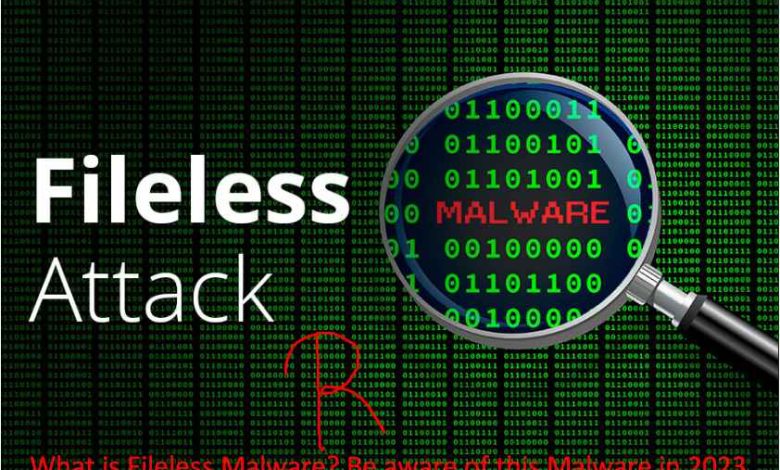
Fileless malware is a sophisticated and increasingly prevalent cyber threat that poses significant risks to businesses and individuals alike. Unlike traditional malware that relies on malicious files stored on a system’s hard drive, fileless malware operates entirely in memory, making it challenging to detect and combat using conventional security measures. In this article, we will explore the nature of fileless malware, how it works, and the importance of understanding this threat in 2024.
How Fileless Malware Works
In-memory Attacks
Fileless malware leverages vulnerabilities in a system’s RAM, injecting malicious code into running processes without leaving any traces on the hard drive. By residing solely in the volatile memory, fileless malware evades traditional antivirus and anti-malware tools, enabling attackers to maintain persistence and carry out stealthy operations.
Living off the Land Techniques
Another hallmark of fileless malware is its ability to “live off the land,” meaning it exploits legitimate system tools and processes to carry out its malicious activities. By using trusted applications, such as PowerShell or Windows Management Instrumentation (WMI), attackers can avoid raising suspicion and bypass security controls.
Script-Based Attacks
Fileless malware often employs scripts, such as JavaScript or PowerShell scripts, to initiate attacks. These scripts can be delivered through various vectors, including malicious emails, compromised websites, or exploit kits. Once executed, the script operates in memory, executing its payload without leaving any traditional malware artefacts.
The Evolution of Fileless Malware
History and Origins
Fileless malware first emerged in the early 2000s but has evolved significantly over the years. Early variants were relatively simple, but as cybersecurity defences improved, so did the sophistication of fileless malware. Today’s fileless attacks are highly targeted and can exploit even the most secure networks.
Recent Trends and Developments
In 2023, cybersecurity experts have witnessed a surge in fileless malware attacks. Attackers are increasingly leveraging fileless techniques to evade detection and deliver potent payloads, such as ransomware or data exfiltration tools. Additionally, fileless malware has started targeting not only Windows-based systems but also macOS and Linux environments.
Detecting Fileless Malware
Challenges in Detection
Detecting fileless malware is a challenging task for traditional signature-based antivirus solutions. Since fileless attacks do not rely on files but exploit system tools, the usual file-scanning methods are rendered ineffective.
Advanced Endpoint Protection
To counter the fileless malware threat, organizations are turning to advanced endpoint protection solutions. These solutions use behaviour analysis, machine learning, and AI to identify suspicious activities and patterns indicative of fileless attacks.
Behavior Analysis
By monitoring the behaviour of processes and applications in real-time, behaviour analysis can detect anomalies that may indicate a fileless attack. This proactive approach to security is crucial in staying ahead of evolving threats.
Preventing Fileless Malware
Patching and Updates
Regularly updating operating systems and software is essential in preventing fileless malware. Many fileless attacks exploit known vulnerabilities, and timely patching can significantly reduce the attack surface.
Endpoint Security Solutions
Investing in robust endpoint security solutions with specific fileless malware detection capabilities is crucial. These solutions can identify and block malicious activities before they compromise the system.
User Education and Awareness
Educating employees about the risks of fileless malware and promoting safe computing practices can prevent many attacks. Ensuring that users are cautious about clicking suspicious links or downloading unknown files can act as a strong defence.
Fileless Malware and Cybersecurity Landscape in 2024
Potential Targets
In 2023, fileless malware is expected to target a wide range of entities, including government agencies, financial institutions, healthcare organizations, and individual users. The lure of a stealthy attack with potentially significant rewards makes fileless malware appealing to cybercriminals.
Impact on Businesses and Individuals
The impact of a successful fileless malware attack can be devastating. For businesses, it can result in data breaches, financial losses, and reputational damage. Individuals may suffer from identity theft, loss of personal data, or falling victim to various scams.
Combating Future Threats
As the threat of fileless malware continues to grow, cybersecurity professionals must collaborate and share threat intelligence to stay one step ahead of cybercriminals. Continuous research, innovation, and proactive defence strategies are essential in combating future threats.
How to Make Free Unlimited Websites
Conclusion
Fileless malware is a formidable and rapidly evolving threat that demands immediate attention from organizations and individuals alike. Its ability to operate stealthily, evade detection, and cause substantial harm underscores the importance of staying informed about this malicious technique. Implementing proactive security measures, leveraging advanced endpoint protection, and educating users are essential steps in fortifying defences against fileless malware in 2024.
FAQs About Fileless Malware
What is fileless malware?
Fileless malware is a type of malicious software that operates entirely in a system’s memory, leaving no traces on the hard drive. It exploits legitimate system tools and processes to carry out attacks, making it challenging to detect using traditional antivirus solutions.
How does fileless malware differ from traditional malware?
Unlike traditional malware, which relies on malicious files stored on the hard drive, fileless malware operates in memory and uses legitimate system tools, making it harder to detect and trace.
What are the living-off-the-land techniques used by fileless malware?
Living off-the-land techniques involve leveraging trusted system tools, such as PowerShell or WMI, to execute malicious activities without raising suspicion.
How can organizations detect fileless malware?
Organizations can detect fileless malware by investing in advanced endpoint protection solutions that use behaviour analysis and AI to identify suspicious activities.
What are the potential targets of fileless malware in 2024?
In 2024, fileless malware is expected to target government agencies, financial institutions, healthcare organizations, and individual users due to the lure of stealthy attacks and significant rewards.





